


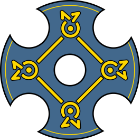
Brecon High School © All rights reserved | Cookies & Privacy Policy | Accessibility Statement | Terms of Use | Remote Access Website by View Web Design















BRECON TOWN
A few miles to the south is Cyfarthfa Retail Park offering shopping by many top High Street names and a health club.
We are close to Hereford in the north and too the south you will find the Cardiff, our capital city of Wales.
The town's name comes from that of the old Welsh name of the kingdom -
A short distance upstream, the River Tarrell enters the Usk river. Before the building of the bridge over the Usk, Brecon was one of the few places where the river could be forded, making it an important strategic military position as well as an important crossing point in mid Wales for drovers, farmers and merchants.
It is therefore not surprising that during the Norman invasion of Wales, Brecon became the site for a defensive Norman castle built by Bernard de Neufmarche in the late 11th century. Less than a mile from the remains of the castle stands Brecon Cathedral, founded as a Benedictine monastery by Neufmarche's confessor, a monk from Battle Abbey in Sussex. While fairly modest as cathedrals go, nevertheless it is of great historical interest, and has seen both Norman lords, Welsh princes and leaders worship and be interred in its grounds. It boasts the biggest cresset stone in Britain with 30 cups (a cresset stone is an ancient form of lighting -
Alongside the cathedral stands the Prior's house. One of its most notable occupants was Sir John Price (1502-
There is a huge Iron Age hill fort of Pen-
To the West of the town lies the largest Roman fort of its type in Wales -
The hills around Brecon boast some of the finest walking and mountaineering terrain in Britain, including Pen-
In August, the annual Brecon County Show takes place. Also the Brecon Jazz Festival is held over 3 days within the town centre with performances in several open air venues, and in a number of indoor venues including the town's market hall and at Theatr Brycheiniog.
Brecon has strong military links to this day. There are two military bases located outside the town. Dering Lines is the home to the Infantry Battle School, formerly known as Infantry Training Centre Wales, and the Brecon Barracks are home to 160 solders of the Wales Brigade. Eight miles away near Sennybridge there is a third military establishment. Sennybridge Training Area is an important training facility for the British.
Brecon Beacons
There are few places in Wales that can beat the Brecon Beacons for the beauty of its landscape – from wild rugged mountains to remote moorland and gentle wooded valleys. One of three National Parks in Wales it covers a vast area of more than 1344 km².
The Brecon Beacons range, in its truest sense, is a series of mountains to the south of Brecon. There are six main peaks: from west to east these are: Corn Du (873 m or 2864 feet), Pen y Fan, the highest peak (886 m or 2907 feet), Cribyn (795 m or 2608 feet), Fan y Big (719 m or 2359 feet), Bwlch y Ddwyallt (754 m or 2474 ft) and Waun Rydd (769 m or 2523 ft). These summits form a long ridge, and the sections joining the first four form a horseshoe shape around the head of the Taf Fechan river, which flows away to the south-
The Brecon Beacons are said to be named after the ancient practice of lighting signal fires (beacons) on mountains to warn of attacks by invaders, or more recently to commemorate public and national events such as coronations or the Millennium.
The round of the Taf Fechan skyline forms a popular ridge walk commonly known as the 'Beacons Horseshoe'. Many other fine walks exist in this part of the National Park.
In 2005 its western reaches gained global status with its membership of the Global Network of National Geoparks. The Fforest Fawr Geopark with its red sandstone peaks of Pen Y Fan and Corn Du brings visitors from all over the world to enjoy some of the most breathtaking views in the whole country.
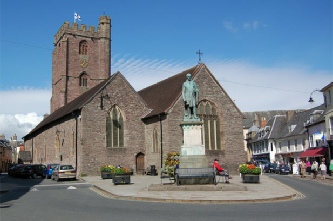
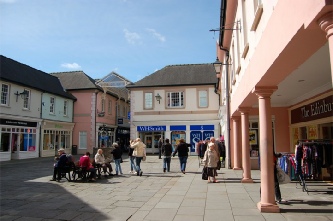
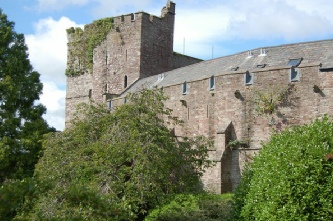
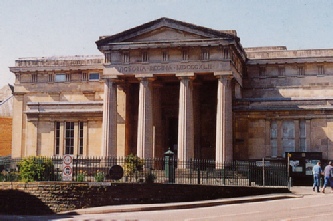
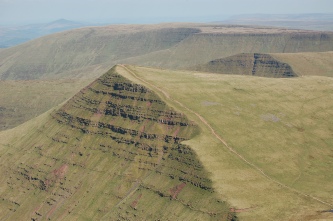
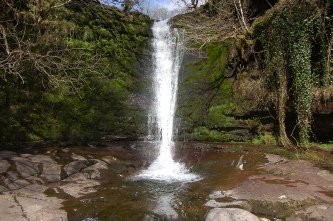
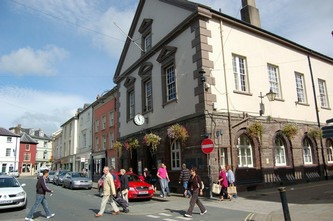

Brecon, or Aberhonddu as it is known in Welsh is an historic market town in the heart of the Brecon Beacons National Park. Ancient Britons, Romans and Normans have each left their mark on Brecon.
Brecon has a wide range of independent retailers as well as high street stores offering you a comprehensive shopping experience!
There's a thriving creative community in and around the Brecon Beacons National Park, making this a superb region to shop for handmade gifts or art inspired by the countryside.
All our towns have something different to offer. Brecon and Crickhowell have a good mixture of outdoor shops and boutiques, while Abergavenny is fantastic for food.
The quirky, arty town of Hay-
In our villages and rural areas, you'll find general stores and farm shops stuffed with Welsh specialities and seasonal produce, while our National Park visitor centres and tourist information offices are good places to pick up local maps and guides.













